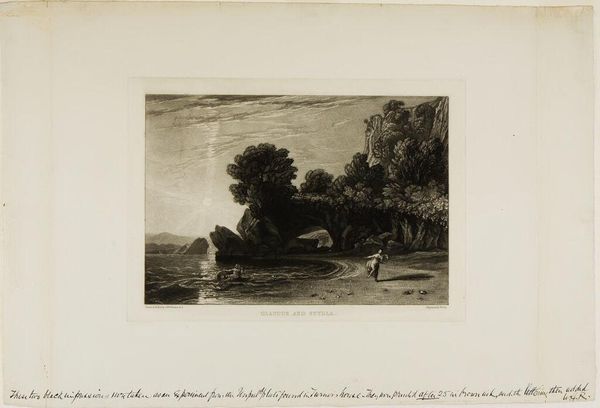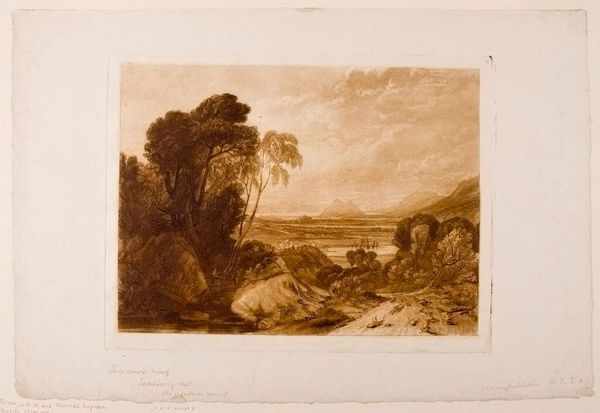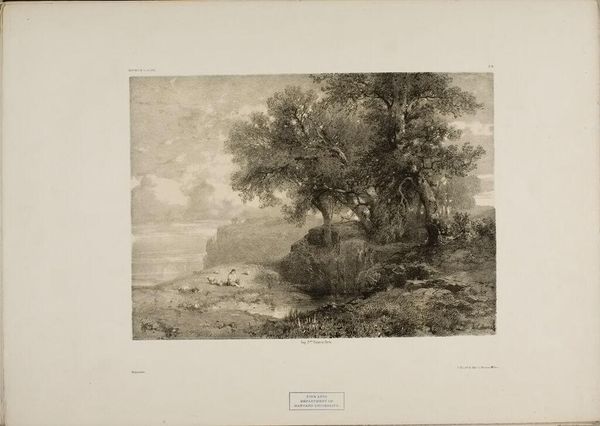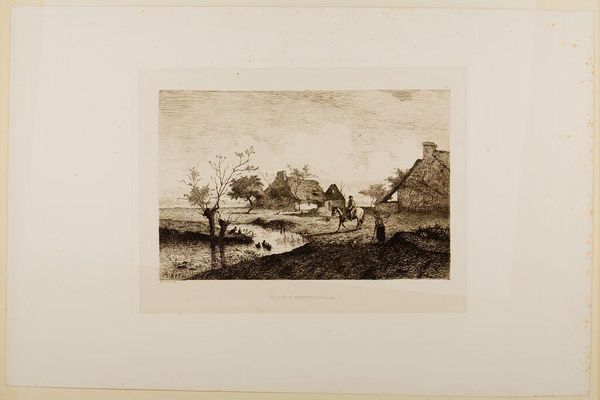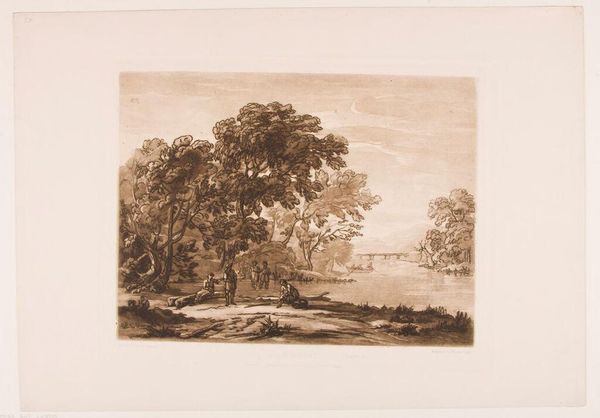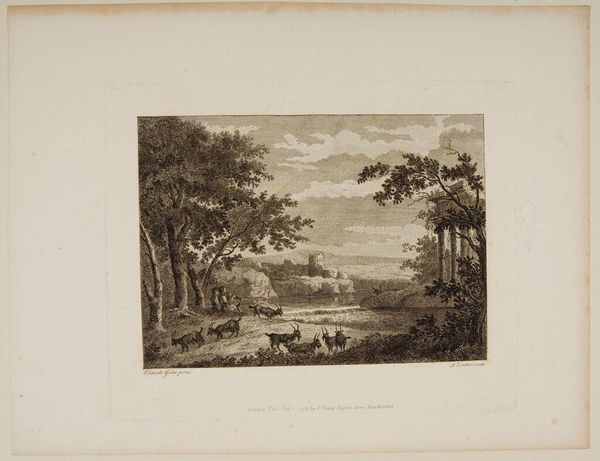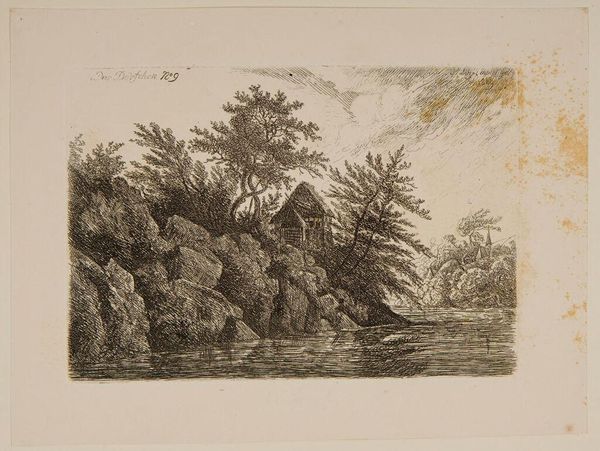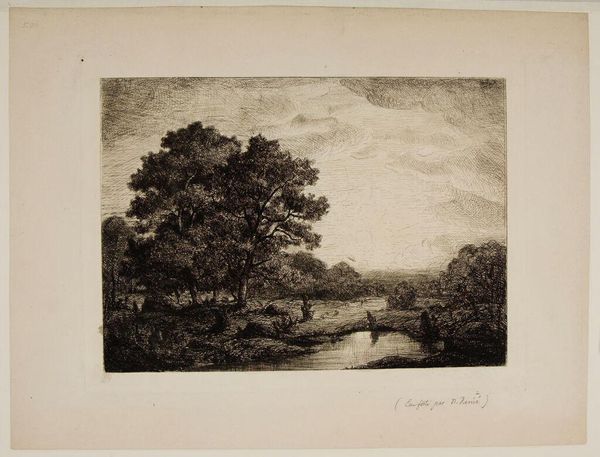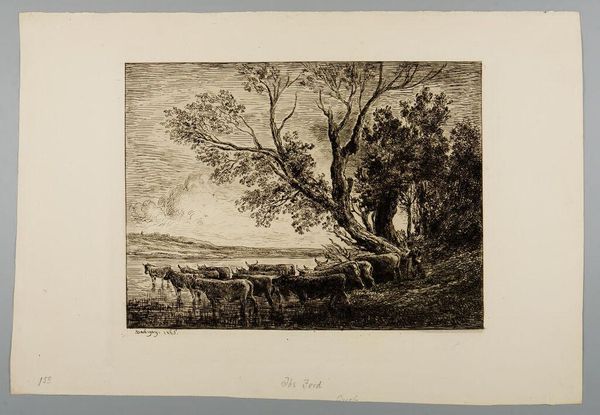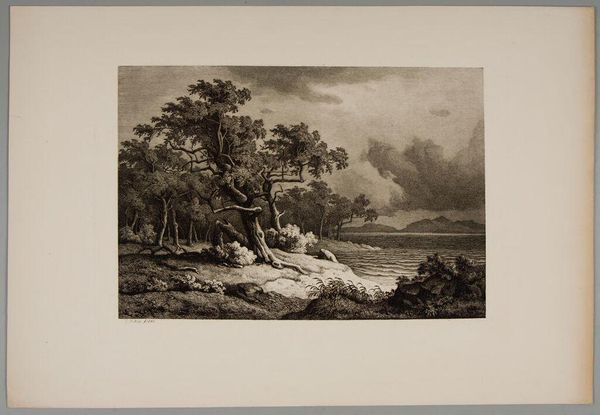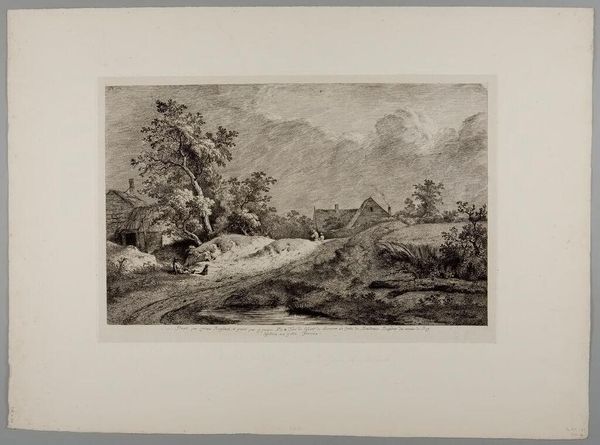
Copyright: CC0 1.0
Curator: This is William Say's "Glaucus and Scylla," a print that captures a dramatic moment from Ovid's Metamorphoses. The sepia tones give it a somewhat melancholic feel. Editor: Yes, the monochromatic palette really simplifies the scene. My eye is drawn to the contrast between the smooth, curving lines of the shoreline and the jagged rocks. It conveys a sense of impending chaos. Curator: That sense of unease certainly reflects the narrative. Scylla, fleeing Glaucus's unwanted advances, is about to be transformed into a monster. The composition speaks volumes about the power dynamics at play. Editor: Absolutely. The fleeing figure of Scylla is deliberately placed near the dark, looming trees. The artist uses this placement to foreshadow her grim fate. Curator: Say's rendering captures the pain of transformation and the loss of agency that Scylla experiences. He highlights the vulnerability of women in classical narratives. Editor: It is masterfully rendered, emphasizing how even in apparent idyllic nature, the composition reveals darker forces at work. Curator: Looking at this piece again, it is fascinating to consider the lasting impact of Ovid’s narrative on the history of art and our understanding of power. Editor: Indeed, a simple yet powerful demonstration of form mirroring narrative.
Comments
No comments
Be the first to comment and join the conversation on the ultimate creative platform.
